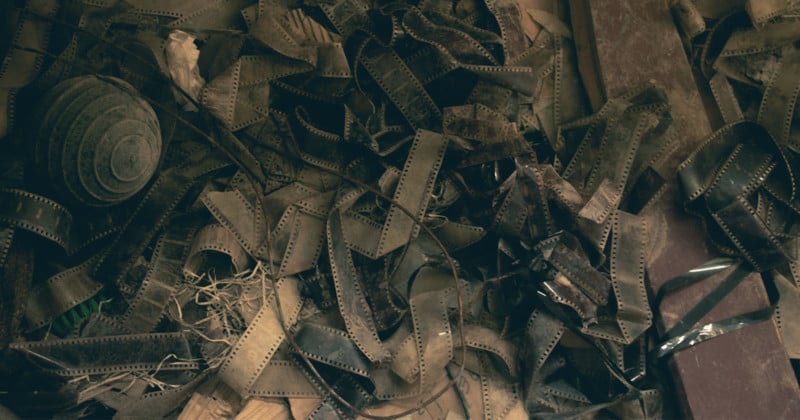Plastic Waste and Toxic Chemicals: Is Film Photography Bad for the Planet?
A group of analog photographers in Boston has looked at the impact film has on the environment and explored ways to make it more sustainable.
With film photography’s popularity surging in a new era where climate change is a more pressing issue than ever before, students from Northeastern University have looked at the medium’s impact on the planet.
“The process is really wasteful from start to finish,” fourth-year student Josh Burns tells The Scope. “It definitely concerns me as more people seem to be getting involved in film photography.”
Chemicals are the most hazardous issue, particularly silver which is used in the fixer. Photo labs are supposed to dispose of silver properly but in 2006 Swedish authorities found that silver pollution had halved in Stockholm’s sewers over a five-year period which they attributed to the decline of film photography and the rise of digital.
Then there is the paper and packaging film photography uses. Excessive photo paper can be used in darkrooms as photographers try and expose negatives perfectly, while rolls of film are transported and sold in plastic packaging.
Water wastage is another association of analog with an Environmental Protection Agency study from 1997 finding that photographic processing used up to 1,000 gallons of wastewater per day
“It’s sort of a difficult subject,” film photographer Devan Jeffrey tells The Scope. “Mainly because it’s one of those things that is impossible to avoid.
How to Reduce the Environmental Impact of Film Photography
“Finding new ways for sustainability in terms of photography is something I hope we can achieve somehow,” says Dana Mueller, an assistant teaching professor from Northeastern University.
“It would help if the industry created more advances in terms of more sustainable chemicals…we all would embrace it.”
Photo labs burnishing eco-credentials have begun popping up such as the U.K.-based Northern Sustainable Darkroom. The co-founder, Edd Carr, has also released a research paper examining the ecological impact of gelatin.
Some photo labs display their environmental policy like AFG Photo Lab which has an extensive explanation on how silver is treated in its laboratory.

Omer Hecht, owner of CatLABs camera store in Boston, argues that the second-hand camera market follows basic principles of sustainability.
“All these cameras behind me they’re all used,” says Hecht. “They would have ended up in a landfill because they have no material value or use outside of what we do here.”
Hecht says that he recycles and resues 95% of all shipping material that enters his premises.
“The overarching key aspects of sustainability is that we’re aware,” he says. “The photographic process requires hugely unsustainable technologies…It requires animal products, animal products are fully unsustainable, but there isn’t yet a technology to avoid using gelatin.”
The camera store owner says that one of the ways people can reduce waste in the darkroom is by not having the faucet on all of the the time, film can still be developed without gallons of water.
Photographers should remain mindful when working through the analog process. Only printing the photos that will be kept rather than the entire roll is another way to reduce film’s impact.